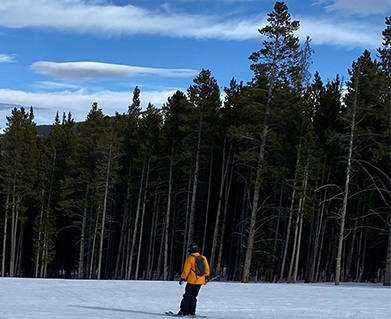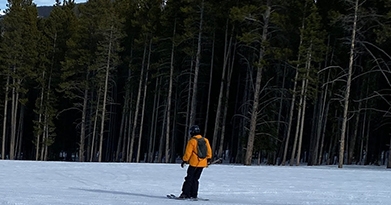
The exhilaration of carving through fresh powder, the wind whipping through your hair, the breathtaking panoramas – skiing is a symphony of sensations that lures winter enthusiasts to snow-capped mountains. But like any exhilarating activity, safety is paramount. This guide equips you with the knowledge and tools to navigate the slopes with confidence, ensuring your ski experience is as memorable as it is safe.
Before You Hit the Powder:
1. Gear Up Properly:
- Helmet: Non-negotiable. Choose a certified ski helmet that fits snugly and comfortably.
- Goggles: Opt for goggles with appropriate tints for varying weather conditions and UV protection.
- Clothing: Layer up with moisture-wicking thermals, an insulating mid-layer, and a waterproof outer shell. Don't forget warm gloves, mittens, and a hat!
- Skis and Bindings: Get professionally fitted equipment that matches your skill level and terrain preferences. Ensure bindings are adjusted by a qualified technician.
- Sun Protection: Apply sunscreen and lip balm, even on cloudy days, to protect your skin from harsh UV rays reflected off the snow.
2. Know Your Limits:
- Skill Level: Be honest with yourself. Ski on runs designated for your skill level. Overestimating your ability can lead to dangerous situations.
- Trail Map: Familiarize yourself with the ski area layout. Note the difficulty levels of trails, closed areas, and any special instructions.
- Weather Conditions: Check the forecast and be prepared for changes. Visibility can deteriorate rapidly in fog or snowfall. Adjust your pace and avoid exposed areas in bad weather.
3. Be a Responsible Skier:
- Follow the Skier's Responsibility Code: The National Ski Areas Association outlines seven essential rules for safe skiing behavior, including yielding to uphill skiers and stopping in control. Abide by these guidelines to ensure everyone enjoys the slopes safely.
- Respect Other Skiers: Be mindful of your surroundings and maintain a safe distance from others. Avoid erratic movements and sudden stops, especially on crowded runs.
- Ski Sober: Never ski under the influence of alcohol or drugs. Impairment significantly hinders your judgment and reaction time, putting yourself and others at risk.
Hitting the Slopes:
- Warm Up: Gently loosen your muscles with stretches and slow runs before tackling challenging terrain.
- Stay in Control: Maintain a comfortable speed and adjust it based on the slope angle, visibility, and traffic. Use snowplow turns or parallel skiing techniques to control your descent.
- Look Up and Yield: Before entering a trail, merging, or stopping, always look uphill and yield to oncoming skiers. The skier above has the right of way.
- Be Aware of Blind Spots: Watch out for skiers emerging from behind trees or other obstructions. Communicate your intentions with clear, loud calls like "Coming left!" or "Coming right!"
- Respect Closed Areas and Trail Markings: Stay within designated ski areas and avoid closed trails or restricted zones. These closures are implemented for your safety and to protect the mountain environment.
Staying Safe in Uncertain Situations:
- Falls: Accept that falls happen. Relax, roll with the impact, and avoid using your arms to brace yourself. Get back up safely and assess any potential injuries.
- Avalanches: Be aware of avalanche risks, especially in backcountry skiing. Obtain proper training and carry avalanche safety equipment if venturing off groomed trails.
- Emergencies: Know the emergency procedures at the ski area. Carry a charged phone and locate emergency contact information readily. Report any accidents or suspicious activity to ski patrol immediately.
Beyond the Basics:
- Lessons: Don't underestimate the value of professional instruction. Whether a beginner or seasoned skier, lessons can refine your technique, improve your confidence, and enhance your overall enjoyment.
- Ski Patrol: Ski patrol personnel are there to help. Don't hesitate to ask for directions, assistance with equipment, or clarification on safety rules.
- Buddy System: Skiing with a companion adds an extra layer of safety and enjoyment. Look out for each other and ensure no one gets left behind.
Remember, safety isn't a chore, it's the foundation for a truly fulfilling ski experience. By prioritizing proper gear, self-awareness, and responsible behavior, you can approach the slopes with confidence, knowing you've laid the groundwork for a safe and exhilarating adventure. So, gear up, carve through the powder, and revel in the magic of winter, all while prioritizing the safety that allows you to do it again and again.







